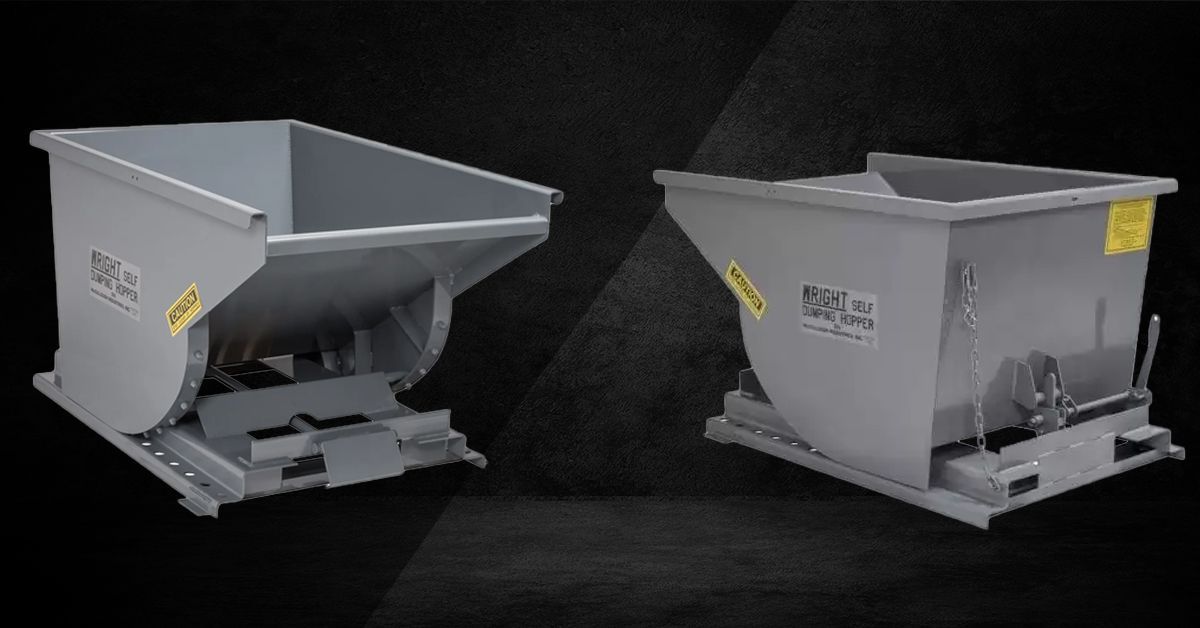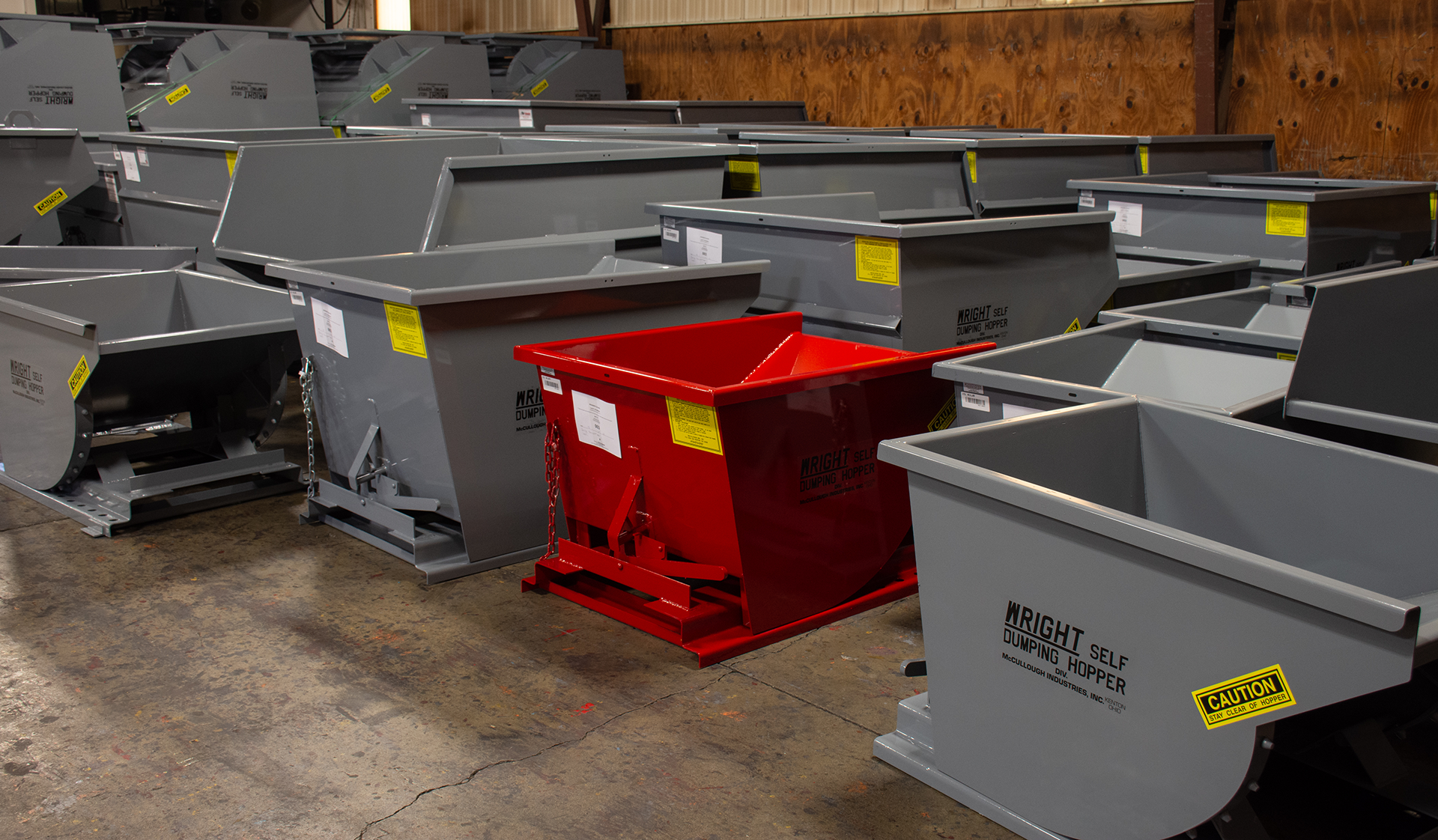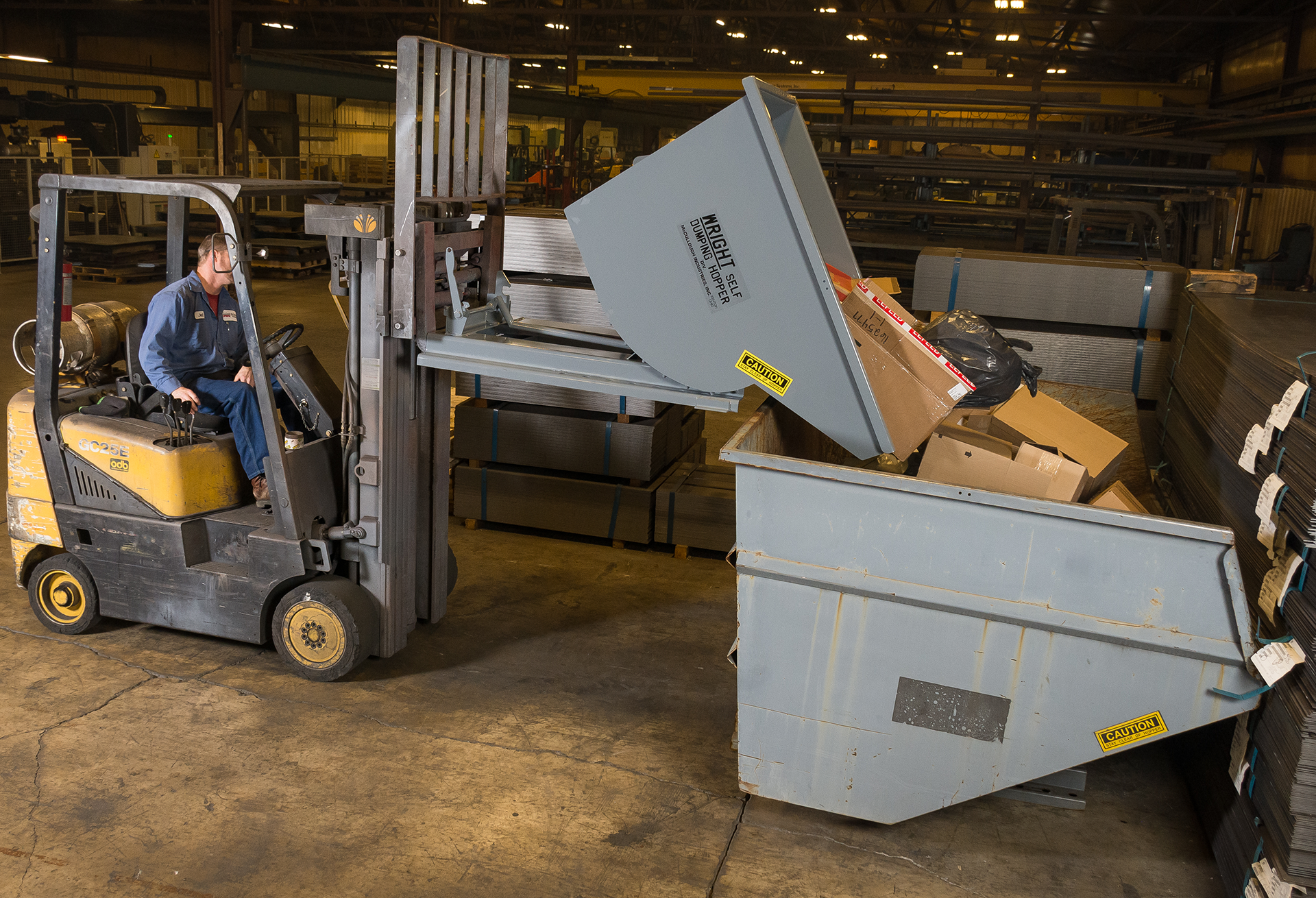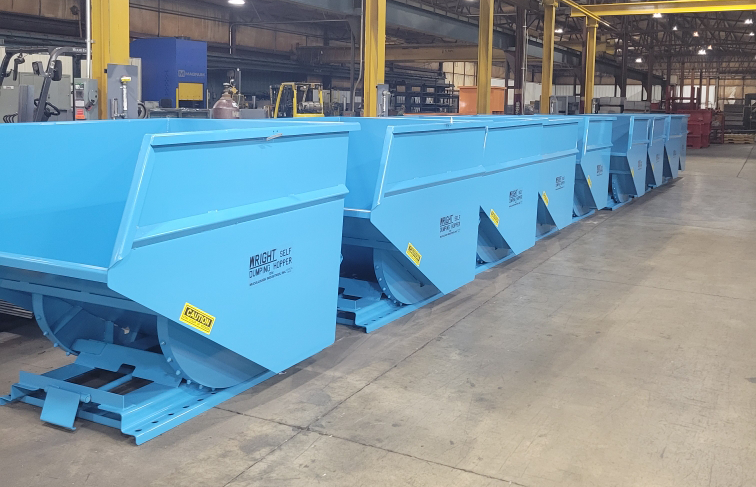
When managing material flow in a manufacturing plant, metal shop, or industrial warehouse, the choice of container makes a measurable difference in safety, efficiency, and long-term return on investment. While some operations may rely on generic bins, open containers, or manually tilted dumpsters, those in high-frequency, heavy-duty environments require more than just something to toss scrap into. They need engineered performance. That’s where industrial self-dumping hoppers prove their value.
McCullough Industries builds its self-dumping hoppers with decades of field experience and customer feedback in mind. This blog outlines why purpose-built industrial hoppers significantly outperform standard bins in demanding use cases and why industrial buyers should invest in long-term solutions, not short-term patches.
Designed for High Frequency Dumping
The first place where self-dumping hoppers stand apart is in the consistency of use. In busy operations where containers are filled and emptied several times a day, the stress placed on welds, fork pockets, and hinges is substantial. Standard bins, even those modified for forklift compatibility, often show signs of fatigue quickly.
McCullough’s industrial self-dumping hoppers are engineered with this in mind. All GEN II hoppers feature reinforced structural integrity, low centers of gravity for tipping safety, and automatic return mechanisms. Weld seams are continuous, reducing weak points and minimizing the risk of leaks when handling wet or oily materials. The self-dumping action is controlled and repeatable, which makes training easier and reduces operator strain.
Engineered Safety Advantages
Safety is more than a feature, it’s a necessity. Improvised or low-grade containers often require operators to manually manipulate the load or dump mechanism. In some cases, the lack of a proper latch system means accidental spills during transport, which can injure workers or damage equipment.
McCullough’s industrial hoppers are built with locking mechanisms that engage automatically during transit and release only when triggered by a handle or bump. This ensures the hopper remains stable while in motion and dumps only when intended. Forklift compatibility is also precisely engineered. Standard fork pockets are sized to 3" x 7.5" and reinforced to prevent shifting or slippage during lifts. All of this adds up to a safer experience for operators and those around them.
Durability That Saves Money Over Time
When comparing the cost of a McCullough industrial self-dumping hopper to a standard container, it’s important to think beyond the initial purchase. Standard bins may require repairs, retrofitting, or full replacement within a year or two, particularly in heavy-use settings. Hoppers built for industrial use, on the other hand, are designed to last for many years under continuous service.
Materials matter. McCullough offers hoppers constructed from 7-gauge steel or heavier, with base thicknesses suited for high-impact applications. Optional upgrades include thicker base plates, bump release mechanisms for hands-free dumping, and caster packages for easier mobility. Instead of being treated as disposable tools, these hoppers become long-term assets.
Real-World Use Cases
In a metalworking facility, oily steel chips can break down inferior containers quickly. That same operation, when outfitted with a sealed GEN II hopper, can manage daily scrap output without leaks or corrosion.
In a recycling center, forklift operators move dozens of bins per shift. With McCullough self-dumping hoppers, bump release designs let them dump without dismounting, cutting unloading time and reducing exposure to heavy or unstable loads.
A machining plant that upgraded to self-dumping hoppers reduced downtime from spills and improved floor cleanliness. These results weren’t just anecdotal. Over a six-month period, their maintenance costs dropped, and worker injury reports involving container handling fell to zero.
Comparison: Industrial Self-Dumping Hoppers vs. Standard Containers
| Feature | Standard Bin/Dumpster | McCullough Self-Dumping Hopper |
|---|---|---|
| Dumping Method | Manual or improvised tipping | Engineered self-dump with reset latch |
| Material Thickness | Varies; often thin metal | 7-gauge steel or thicker |
| Leak Resistance | Minimal | Continuous welded seams |
| Operator Safety | Limited protection | Locking mechanism and stable balance |
| Customization | Rare | Available (casters, lids, finish, size) |
| Lifecycle Cost | High (due to frequent replacement) | Lower (longer lifespan, fewer repairs) |
Custom Fit for Industrial Applications
McCullough self-dumping hoppers aren’t built to be one-size-fits-all. They are available in sizes from 1/4 to 6 cubic yards and can support loads up to 7,000 pounds. Whether you need multiple small hoppers for distributed waste collection or one large unit for bulk scrap, there is a model to match.
Add-on options allow buyers to customize based on floor layout, materials handled, and operational needs. Swivel and rigid casters improve mobility; powder-coated finishes increase longevity in corrosive environments; and fork stirrups or quick attach plates improve machine compatibility.
Making the Case for Purpose-Built Containers
Industrial operations demand repeatable performance. That means containers must perform without compromise through thousands of load/unload cycles, unpredictable material types, and changing environments. McCullough’s self-dumping hoppers are not just stronger, they are smarter by design. They reduce effort, lower injury risk, and streamline disposal.
If your operation still uses basic bins, there’s an opportunity to gain efficiency, safety, and peace of mind by switching to a system designed specifically for your use case. A container should never be a liability. It should be an extension of your workflow.
Conclusion: Smart Investment, Proven Performance
In high-volume environments, the equipment you choose has ripple effects on everything from worker morale to operating costs. Industrial self-dumping hoppers from McCullough Industries provide a better way to manage materials. They are safer, more durable, and easier to operate.
Backed by decades of engineering expertise and built in the USA, these hoppers represent an investment in long-term productivity. Instead of constantly replacing failing containers, make the switch to hoppers that are built to last. Your operation, and your team, deserve it.







